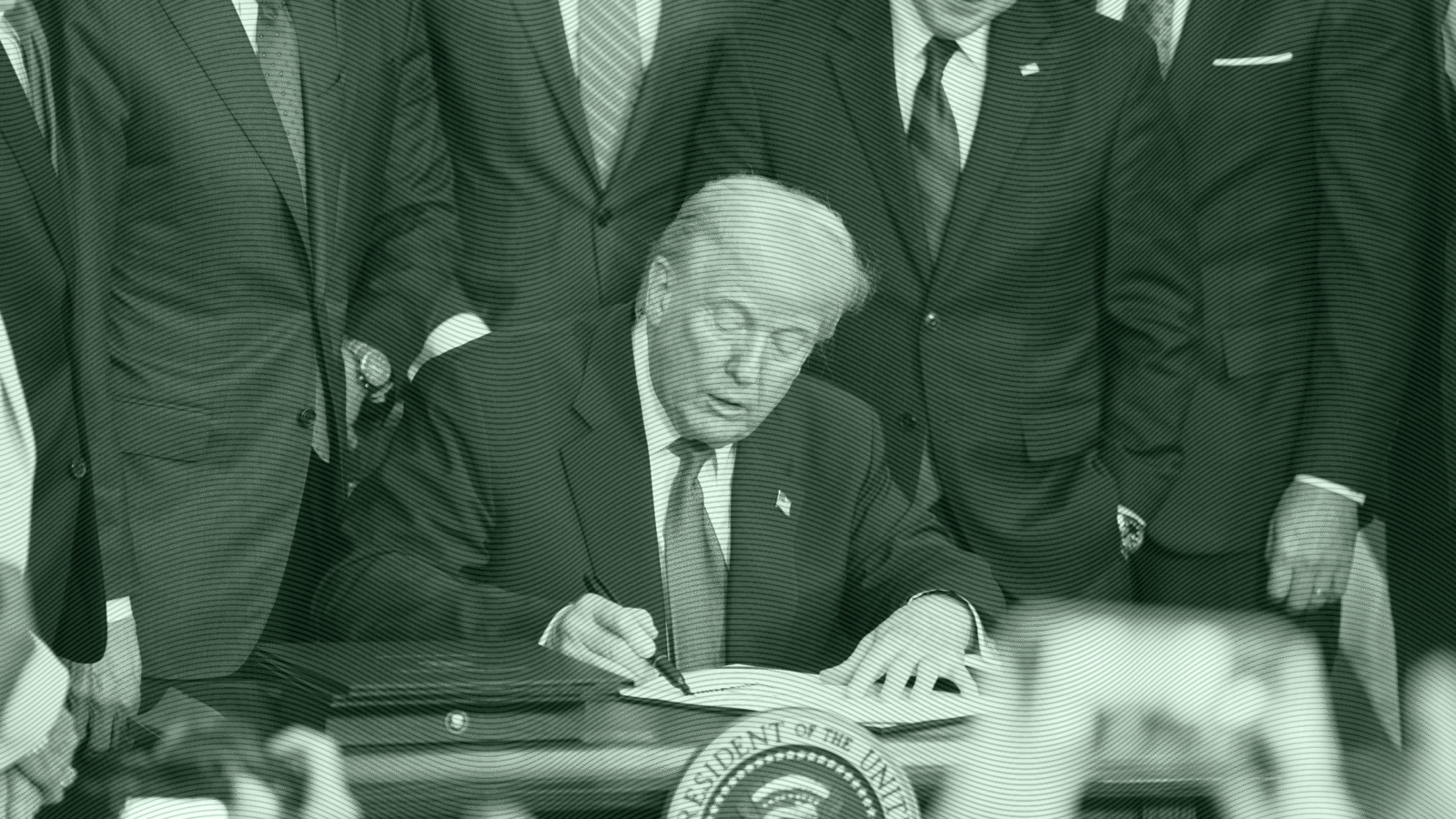Good morning.
These ETFs struck a gold mine.
The first half of 2025 will be remembered for economic volatility and geopolitical conflict. Look no further than the ETF market to understand how both of those trends are shaping our world today.
Of the top-performing ETFs so far this year, three track gold and two are tied to European defense stocks, according to ETF.com. Investors have been looking for safe havens as well as taking advantage of increased defense spending in Europe. The Select STOXX Europe Aerospace & Defense ETF (EUAD) has climbed more than 70% this year. Its biggest holdings include planemaker Airbus, German arms manufacturer Rheinmetall and French aerospace corporation Safran. Meanwhile, the WisdomTree Efficient Gold Plus Gold Miners Strategy Fund (GDMN) has seen a similar performance. The other top funds include: the Sprott Gold Miners ETF (SGDM), the Themes Gold Miners ETF (AUMI) and the SPDR European Shield ETF (SHLD).
Can gold and guns remain a winning combo in the second half of the year? We kind of hope not.
Trump’s ‘Big, Beautiful Bill’ Is a ‘Mixed Bag’ for Advisors

The Trump administration’s “big, beautiful bill” isn’t just keeping Congress up all night.
Financial advisors have been poring over Trump 2.0’s signature legislation, weighing the consequences of the One Big Beautiful Bill Act, which is expected to be passed by the House of Representatives today, taking it a step closer to landing on President Trump’s desk by his July 4 deadline. Some worry about adding trillions of dollars to the already ballooning national debt, while others applaud extending the Tax Cuts and Jobs Act, set to expire next year. If passed, the legislation will have monumental impacts on wealth managers and their clients, including tax and estate planning, for years to come.
“The thought by the current administration is that lower interest rates, increased economic growth and revenue from tariffs will result in lowering the deficit,” said Tom Balcom, founder of 1650 Wealth Management in Lighthouse Point, Florida. “Only time will tell if their game plan holds true.”
Midterm Mayhem
Many advisors agree that extending some form of the TCJA will be a net positive for clients. Maintaining those cuts, along with other economic stimulators, could boost the economy and help curb the deficit, Balcom said. “If not, the mid-term elections may prove difficult for the Republican party,” he said. “I have clients on both sides of the political spectrum, so I have to remain neutral (Switzerland) when it comes to this topic.”
There is an argument for a modest economic boost with lower tax rates, but the evidence is a “mixed bag,” said Kevin J. Brady, CFP at Wealthspire Advisors in New York City. Instead of addressing the deficit, individual tax rates are being kept low, and “expensive, gimmicky” changes like not taxing tips, overtime and Social Security are grabbing headlines. “As a professional, I will advocate for my clients in whatever form the final bill takes, but it is a bad piece of legislation in my personal view.”
One Tip Wonder. Trump’s bill is filled with short-term rewards, but has the potential to create very long-term pain, said Alex Caswell, a planner at Wealth Script Advisors in San Francisco, adding that he was “shocked” by the tax cuts for the wealthy and how little the legislation does for lower-income Americans. According to taxact.com, the bill’s top-level provisions include:
- State and local tax (SALT) deduction cap increase, mainly impacting filers in high-tax states like New York, California, or New Jersey.
- No tax on tips, which could mean more take-home pay for workers.
Tips are often paid in cash, however, and probably won’t move the needle, Caswell added. “We are already seeing cracks due to our debt via downgrades, weak Treasury auctions, and a dropping dollar,” he said. “Eventually, someone will need to make a hard call to rein in the deficit.”
Scale Smarter: Your Blueprint For Scaling AUM
Driving repeatable and scalable organic growth for your practice is no longer about nimble use of the White Pages, market timing, or outperforming benchmarks. Many of the fastest-growing RIAs credit their success to having a consistent, well-defined process.
Well structured and scalable processes.
This new guide from SmartAsset reveals how various high-growth firms are engineering predictable AUM growth through a repeatable three-part framework:
- Driving a pipeline of high-intent prospects actively searching for financial advisors.
- Structured outreach built to turn a warm lead into a meaningful conversation.
- Leveraging automation that scales without adding headcount.
The result? Many firms using this model have reported streamlined operations, shortened sales cycles, and better visibility with prospects at the right time.
One firm has used this model to add more than $1 billion in AUM since 2019.
Whether you’re aiming for 100 new clients or $100 million in assets, this playbook can help you scale efficiently — and predictably.
Download the free guide now and start building for sustainable growth.
Advisors Start Cramming to Meet Growing Private Market Demand
Time to hit the books.
Private markets have the potential for great returns, and they have historically outperformed public ones. Many advisors steer clear of them, however, partially because of limited knowledge about how they actually work. It’s an information gap many will have to address sooner rather than later.
Apollo Global Management CEO Marc Rowan believes that allocations to private equity and private credit will make up a third of client portfolios in the near future. “The vast majority of financial advisors may not go to private markets directly, [but] they will buy products that give them access to public and private markets,” he said during a Q&A at the Morningstar Investment Conference last week.
If advisors are to stay competitive in Rowan’s vision of the future, many are going to need a private markets crash course.
Study Hall
Right now, advisors allocate an average of just 5% of clients’ portfolios to alternatives, compared with 25% by institutions, according to Fidelity. Part of the gap is due to limited access, since private markets are typically restricted to accredited investors. But unfamiliarity also plays a big role. Private markets are complicated territory.
“You can’t just enter a ticker on a platform and execute transactions,” said Laura Lutton, head of manager research at Morningstar, adding that private market investments often require separate investment platforms and client agreements. “It creates a structural friction that keeps advisors reluctant to get involved,” she told Advisor Upside.
Private markets also come with lower liquidity, less transparency, and complex fee structures — challenges that can be difficult to explain to clients. “It sounds simple, but it’s really not,” Lutton said. Morningstar is working to make those conversations easier by expanding its Medalist Rating framework later this year to include semiliquid funds, offering more transparency and helping identify strategies likely to outperform certain benchmarks.
While, private markets may seem daunting, but advisors don’t have to go it alone:
- One way advisors can become more familiar with private equity and private credit is through sponsors themselves. Major firms like BlackRock, KKR, iCapital and more offer CE credits through alternative investing courses.
- The CFA Institute also offers multiple courses and certifications on private markets.
Do Your Homework. Some advisors are taking the independent study approach, like Alex Caswell of Wealth Script Advisors, who’s been reading books and scholarly articles published in the CFA Institute’s Financial Analysts Journal to understand whether the investments would be right for his clients. So far, he’s not sold on them, especially private credit.
“PC has swallowed up a lot of the fast-and-loose loan and debt origination that was done by banks pre-2008,” he told Advisor Upside. “Now, these PC funds are being shoved into portfolios left and right, and it comes with a lot of unevaluated risks that people aren’t realizing.”
- Unlock Smarter Estate Planning. Get the guide trusted advisors use.
- Future Proof Festival: Join the largest event for RIA decision-makers.
- Take Limitless Advisor’s 7-Min Diagnostic Test to accelerate your success.
Advisor Teams Are Getting Bigger. Here’s Why

The more, the merrier — or so advisors seem to think.
Advisor teams are getting larger as firms grow in size and aging founders scramble to find succession plans. Although a majority of advisor teams are still relatively small — think one to three advisors — more are reaching 10 people or more, according to a recent report from AdvizorPro. These teams are also younger, more diverse, and more likely to embrace technology.
Larger teams signal a shift toward centralized models, per the report, with firms hiring more staff to handle back-office operations, while outsourcing their investment management needs. Experts say this trend is slated to continue as the ongoing M&A mania and private equity funding reshape the wealth management landscape.
Be a Team Player
Advisors have always worked in teams, but those teams have grown larger as client needs become more complex and as demand increases for holistic advice and alternative investments. This year, 65% of Barron’s top-ranked private wealth teams had between 10 and 25 team members, up from 53% two years ago. Two reasons a firm might want larger teams are succession planning and to offload certain roles, like compliance, said Michael Belluomini, SVP of M&A at Carson Group. Consolidation driven by M&A and aging advisor demographics is likely to continue. “I don’t know that we’ll ever see a frenzy like we just did over the past four years,” he said, “although I do think we’re going to have a pretty stable market for at least the next 10 to 15.”
The AdvizorPro report also found:
- Merrill Lynch and Morgan Stanley had the highest number of mapped advisor teams, which operate as “institutional-style units” with lots of clients.
- LPL and Osaic had the third- and fourth-most teams, respectively, with their models instead supporting semi-autonomous advisor groups spread out across the country.
- Team-based advisors are more than six years younger, on average, than solo advisors, with a median tenure of 12 years compared to 24.
“We’re finding advisors are leaning heavily into technology and AI to help scale their businesses,” said Dustin Echenique, CRO of AdvizorPro. “They’re relatively lean in terms of their number of resources, and that trend seems [likely] to continue.”
Consolidation Craze. Despite the rampant M&A activity of the past few years, however, the largest firms have yet to join forces. That’s because there are still so many independent and hybrid firms out there to be snapped up, Belluomini said. Private equity interest in the space, and the risk-free nature of PE investment compared to M&A dealmaking, is also a factor. “We’re starting to see now… more regional PE firms investing in a $4 or $5 billion RIA that historically had been kept out of the business,” he said. “So there’s a long way to go there.”
Extra Upside
- Raising the Bar. SEC Chair Paul Atkins plans to move ahead with raising AUM minimums for advisors, per ThinkAdvisor.
- Bulls and Bears. Morgan Stanley favors US assets, just not the dollar.
- Alt Indie. Cetera joins growing list of IBDs offering alternative investment models.
Advisor Upside is edited by Sean Allocca. You can find him on LinkedIn.
Advisor Upside is a publication of The Daily Upside. For any questions or comments, feel free to contact us at advisor@thedailyupside.com.

